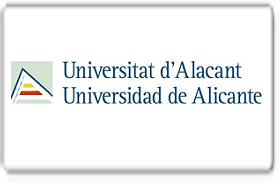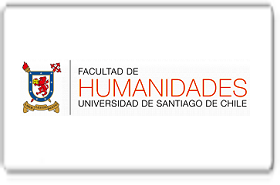Evaluación de los valores de glucosa y presión arterial sistólica en perros obesos
DOI:
https://doi.org/10.56048/MQR20225.8.3.2024.322-337Palabras clave:
Obesidad; Glucosa; Presión arterial; PerrosResumen
La obesidad en perros, presenta condiciones similares a los seres humanos, pudiendo provocar inflamación y elevación de la presión arterial, constituyéndose ambos en factores de riesgo para múltiples enfermedades. La ingesta excesiva de grasa afecta directamente la presión arterial y los altos niveles de grasa visceral pueden reducir el óxido nítrico intracelular, provocando vasoconstricción y alterando la presión arterial. Los perros obesos tienden a tener niveles elevados de glucosa e insulina, lo que indica disfunción metabólica y posibles alteraciones cardíacas y metabólicas. Este estudio analiza la glucosa y la presión arterial en 70 perros obesos, utilizando métodos de medición precisos y validados.
El análisis de la muestra mostró una correlación positiva débil pero significativa entre los niveles de glucosa y la presión arterial sistólica, sugiriendo una relación lineal entre ambos parámetros. Sin embargo, el sexo no se correlacionó significativamente con las variaciones en los niveles de glucosa o presión arterial, indicando que otros factores pueden ser más influyentes en estas variaciones. Los resultados sugieren que mientras hay una relación entre glucosa y presión arterial, el sexo no es un factor determinante en estas medidas en perros obesos.
Estos hallazgos destacan la importancia de considerar múltiples factores, como la edad y el nivel de actividad física, al evaluar la salud metabólica y cardiovascular en perros obesos, ya que la obesidad afecta a diversas funciones y sistemas del cuerpo de manera compleja y multifactorial.
Descargas
Métricas
Cited
DOI: 10.56048![]()
Citas
Abinaya, A., Karu, P., Karunakaran, R., Joseph, C., Senthil, N. R., & Vairamuthu, S. (2018). Influence of age on blood biochemical profile of obese dogs. International Journal of Conservation Science, 6, 991–993.
Acierno, M. J., Brown, S., Coleman, A. E., Jepson, R. E., Papich, M., Stepien, R. L., & Syme, H. M. (2018). ACVIM consensus statement: Guidelines for the identification, evaluation, and management of systemic hypertension in dogs and cats. Journal of Veterinary Internal Medicine, 32(6), 1803–1822. https://doi.org/10.1111/jvim.15331
Cavalcante, C. Z., Michelotto, P. V., Jr, Capriglione, L. G. A., Roncoski, A. T., & Nishiyama, A. (2023). Weight loss modifies lipid peroxidation and symmetric dimethylarginine levels in obese dogs. Revue Canadienne de Recherche Veterinaire [Canadian Journal of Veterinary Research], 87(1), 29–34.
De Anta Vinyals, A. (2020). Cambios en la presión arterial durante la anestesia. Clinanesvet, 20, 9–18.
de Carrellán Mateo, A. G. (junio-2021). Presión arterila durante la anestesia. Argos, 1(1), 1–14.
de Marchi, P. N., Machado, L. H. de A., Holsback, L., Calesso, J. R., Fagnani, R., Zacarias Junior, A., & Cardoso, M. J. L. (2020). Metabolic profile and adipokine levels in overweight and obese dogs. Turkish journal of veterinary and animal sciences, 44(5), 1093–1099. https://doi.org/10.3906/vet-2004-44
Feitosa, M. L., Zanini, S. F., Sousa, D. R. de, Fantuzzi, E., Carraro, T. C. L., Pinto, C. A., Bertonceli, R. M., & Colnago, G. L. (2016). Glucose and lipid profile of obese dogs fed with different starchy sources. Ciencia rural, 46(12), 2189–2194. https://doi.org/10.1590/0103-8478cr20151327
Fernandes, C. G., Almeida, B. F. M. de, Floriano, B. P., & Romão, F. G. (2022). Evaluation of the occurrence of metabolic syndrome in obese dogs and the role of caloric restriction diet as an adjuvant therapy. Acta Veterinaria Brasilica, 16(4), 358–364. https://doi.org/10.21708/avb.2022.16.4.10960
German, A. J., Hervera, M., Hunter, L., Holden, S. L., Morris, P. J., Biourge, V., & Trayhurn, P. (2009). Improvement in insulin resistance and reduction in plasma inflammatory adipokines after weight loss in obese dogs. Domestic Animal Endocrinology, 37(4), 214–226. https://doi.org/10.1016/j.domaniend.2009.07.001
German, Alexander J. (2006). The growing problem of obesity in dogs and cats. The Journal of Nutrition, 136(7), 1940S-1946S. https://doi.org/10.1093/jn/136.7.1940s
Gomez-Fernandez-Blanco, C., Peeters, D., Moyse, E., Farnir, F., Höglund, K., Gouni, V., Wiberg, M., Lundgren Willesen, J., Hanås, S., McEntee, K., Tiret, L., Häggström, J., Lohi, H., Chetboul, V., Fredholm, M., Seppälä, E. H., Lequarré, A.-S., & Merveille, A.-C. (2018). Interbreed variation of biomarkers of lipid and glucose metabolism in dogs. Veterinary Clinical Pathology, 47(4), 582–588. https://doi.org/10.1111/vcp.12673
Graif, D. S. (2017). Hipertensión arterial en perros. ¿Mito o realidad? En 17vo Congreso nacional de AVEACA. http://catalogo.unvm.edu.ar/doc_num.php?explnum_id=1533
Hess, R. S. (2010). Insulin resistance in dogs. The Veterinary Clinics of North America. Small Animal Practice, 40(2), 309–316. https://doi.org/10.1016/j.cvsm.2009.12.001
Hoenig, M., Thomaseth, K., Waldron, M., & Ferguson, D. C. (2007). Insulin sensitivity, fat distribution, and adipocytokine response to different diets in lean and obese cats before and after weight loss. American Journal of Physiology. Regulatory, Integrative and Comparative Physiology, 292(1), R227–R234. https://doi.org/10.1152/ajpregu.00313.2006
Kim, H., Seo, J., Park, T., Seo, K., Cho, H., Chun, J., & Kim, K. (2022). Obese dogs exhibit different fecal microbiome and specific microbial networks compared with normal weight dogs. En Research Square. https://doi.org/10.21203/rs.3.rs-1616770/v2
Kim, H., Seo, J., Park, T., Seo, K., Cho, H.-W., Chun, J. L., & Kim, K. H. (2023). Obese dogs exhibit different fecal microbiome and specific microbial networks compared with normal weight dogs. Scientific Reports, 13(1), 1–13. https://doi.org/10.1038/s41598-023-27846-3
Laflamme, D. P. (2006). Understanding and managing obesity in dogs and cats. The Veterinary Clinics of North America. Small Animal Practice, 36(6), 1283–1295. https://doi.org/10.1016/j.cvsm.2006.08.005
Lim, H.-Y., Seung, B.-J., Cho, S.-H., Kim, S.-H., Bae, M.-K., & Sur, J.-H. (2022). Canine mammary cancer in overweight or obese female dogs is associated with intratumoral microvessel density and macrophage counts. Veterinary Pathology, 59(1), 39–45. https://doi.org/10.1177/03009858211040481
Piantedosi, D., Di Loria, A., Guccione, J., De Rosa, A., Fabbri, S., Cortese, L., Carta, S., & Ciaramella, P. (2016). Serum biochemistry profile, inflammatory cytokines, adipokines and cardiovascular findings in obese dogs. Veterinary Journal (London, England: 1997), 216, 72–78. https://doi.org/10.1016/j.tvjl.2016.07.002
Poggiogalle, E., Jamshed, H., & Peterson, C. M. (2018). Circadian regulation of glucose, lipid, and energy metabolism in humans. Metabolism: Clinical and Experimental, 84, 11–27. https://doi.org/10.1016/j.metabol.2017.11.017
Redondo García, J. I., Rubio Zaragoza, M., Gómez Villamandos, R. J., Carrillo Poveda, J. M., Soler i Canet, C., Serra Aguado, I., & Sopena Juncosa, J. J. (2005). Estudio de la presión arterial intraoperatoria en el perro. Consulta revista veterinaria, 123(1), 53–60.
Schneider, S. M., Sridhar, V., Bettis, A. K., Heath-Barnett, H., Balog-Alvarez, C. J., Guo, L.-J., Johnson, R., Jaques, S., Vitha, S., Glowcwski, A. C., Kornegay, J. N., & Nghiem, P. P. (2018). Glucose metabolism as a pre-clinical biomarker for the golden retriever model of duchenne muscular dystrophy. Molecular Imaging and Biology: MIB: The Official Publication of the Academy of Molecular Imaging, 20(5), 780–788. https://doi.org/10.1007/s11307-018-1174-2
Suchowersky, N. D., Carlson, E. A., Lee, H. P., & Behrend, E. N. (2021). Comparison of glucose concentrations in canine whole blood, plasma, and serum measured with a veterinary point-of-care glucometer. Journal of Veterinary Diagnostic Investigation: Official Publication of the American Association of Veterinary Laboratory Diagnosticians, Inc, 33(4), 695–702. https://doi.org/10.1177/10406387211019755
Tropf, M., Nelson, O. L., Lee, P. M., & Weng, H. Y. (2017). Cardiac and metabolic variables in obese dogs. Journal of Veterinary Internal Medicine, 31(4), 1000–1007. https://doi.org/10.1111/jvim.14775
Villagrasa, M., & Veterinario, C. C. (1999). HIPERTENSIÓN ARTERIAL. Clínica Veterinaria de Pequeños Animales AVEPA, 30–40.
Publicado
Cómo citar
Número
Sección
Categorías
Licencia

Esta obra está bajo una licencia internacional Creative Commons Atribución 4.0.
Los autores se comprometen a respetar la información académica de otros autores, y a ceder los derechos de autor a la Revista MQRInvestigar, para que el artículo pueda ser editado, publicado y distribuido. El contenido de los artículos científicos y de las publicaciones que aparecen en la revista es responsabilidad exclusiva de sus autores. La distribución de los artículos publicados se realiza bajo una licencia 
































































































